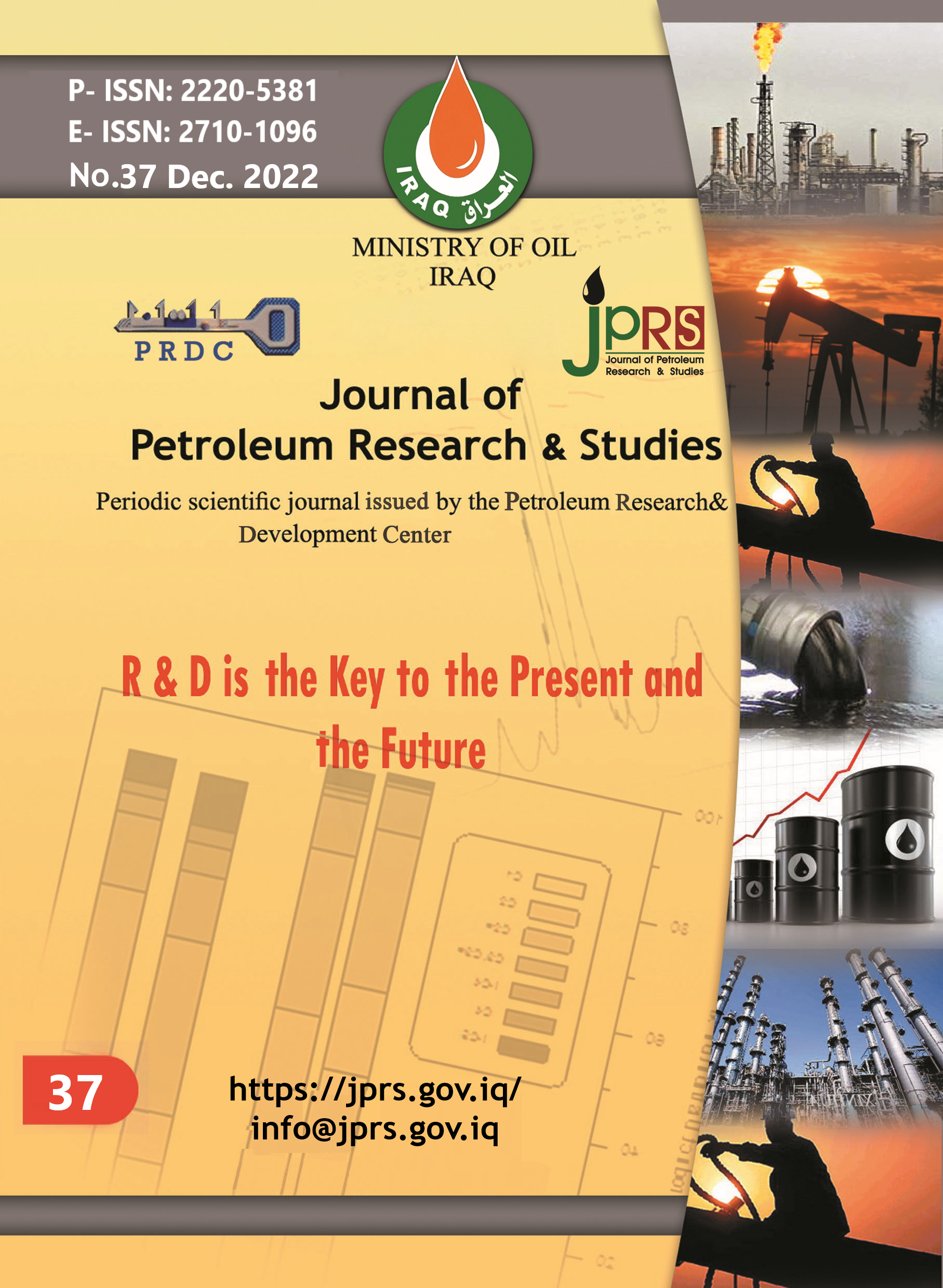The Economic Feasibility of using Renewable Energy in Iraqi Oil Fields
DOI:
https://doi.org/10.52716/jprs.v12i4.727Keywords:
solar; capital; operation cost; generator.Abstract
This study included over all about competition of renewable energy to the conventional energy, and the economic growth on the demand for renewable energy technology especially solar energy, and the increasing on its annual cost decline. Also, highlight on the most important projects applied in the oil fields in the Middle East and America.
In this study, a design and economic simulation of the solar energy system was conducted as a source for generating electricity with a capacity of 1 megawatt and a comparison of the capital and operation cost between the solar energy system, diesel generators, government and private sectors stations at the same operating time and the same energy. The economic simulation has shown that there is a big difference between the capital costs, as the cost of the solar energy system is about (40-37%) higher than the cost of diesel generators and investment stations, respectively, for a maximum operating capacity of 1 megawatt/hour, but on the other hand, it is characterized by The solar energy system has a depreciation factor of 0.75% compared to its counterparts, which reaches 10%, and the standard of its energy cost is low, reaching 0.22 $/ kilowatt compared to other sources of energy. In addition, Payback period of the solar energy system was 9 years by saving fuel cost and its low operating cost that reach to 0.0183 $/kWh, compared to its counterparts from government sector station, diesel generators, power stations. (Fuel from the investor), and private sector stations (fuel from the investor), whose operating costs are (0.1, 0.076, 0.038, 0.1) $/kWh, respectively. The results showed that the solar system economically feasible, with lifetime 25 years, while the generator lifetime ten years only. The solar radiation system limits carbon emissions, as the amount of carbon emissions per kilowatt of energy using conventional fuels is (185-265) grams of CO2 per kilowatt.
References
K. Lovekin, D., Switzer, J., & Finigan, “Renewable energy opportunities in the oil and gas sector”, Pembin. Institute, 2013.
S. Ericson, J. Engel-Cox, and D. Arent, “Approaches for Integrating Renewable Energy Technologies in Oil and Gas Operations”, 2019.
IEA, “Policies and measures database”, Int. Energy Agency, 2019.
Paris Agreement on Climate Change, “English_Paris_Agreement.Pdf”, UNITED NATIONS. pp. 1–27, 2015.
Matthias J. Pickl, “The renewable energy strategies of oil majors-From oil to energy?”, Energy Strategy Reviews, vol. 26, 2019. https://doi.org/10.1016/j.esr.2019.100370
IEA, “Global Energy Review 2020”, 2020.
IEA, “World Energy Outlook 2019”, 2019.
BP, “bp-energy-outlook-2018”, BP Energy, 2018.
IRENA, “RENEWABLE CAPACITY STATISTICS 2020”, 2020.
A. Jäger-Waldau, “PV Status Report 2019”, 2019.
M. Absi Halabi, A. Al-Qattan, and A. Al-Otaibi, “Application of solar energy in the oil industry - Current status and future prospects”, Renewable and Sustainable Energy Reviews. 2015, doi: 10.1016/j.rser.2014.11.030.
Y. Choi, C. Lee, and J. Song, “Review of renewable energy technologies utilized in the oil and gas industr”, Int. J. Renew. ENERGY Res., vol. 7, no. 2, 2017.
glass point, “MIRAAH,” GLASS POINT, 2018. .
H. Saadaw, “Application of Renewable Energy in the Oil and Gas Industry Hisham”, SPE-194972-MS, 2019.
A. Hajjaji, "Introduction 1- Kuwait begins operation of the first solar power plant to produce electricity", Reuters.
Kuwait's Ministry of Oil, "Sidra 500 Project", Kuwaiti Ministry of Oil. ..
glass point, “Belridge Solar”, GLASS POINT. .
“Challenges and barriers in Iraq for solar PV generation: a review”, Int. J. ENERGY Environ. , 2019.
IRENA, “FUTURE OF SOLAR PHOTOVOLTAIC”, International Renewable Energy Agency, 2019.
M. Lalwani, D. P. Kothari, and M. Singh, “Investigation of Solar Photovoltaic Simulation Softwares”, Int. J. Appl. Eng. Res., 2010.
“PV SIMULATION SOFTWARE COMPARISONS: PVSYST, NREL SAM AND PVLIB.”
Power-Calculation, “Principle of diesel generator (DG)”, 2018.
Downloads
Published
How to Cite
Issue
Section
License
Copyright (c) 2022 Rana R. Jalil, Hashim J. Mohammed

This work is licensed under a Creative Commons Attribution 4.0 International License.














